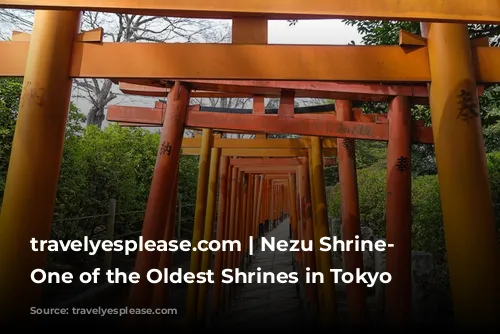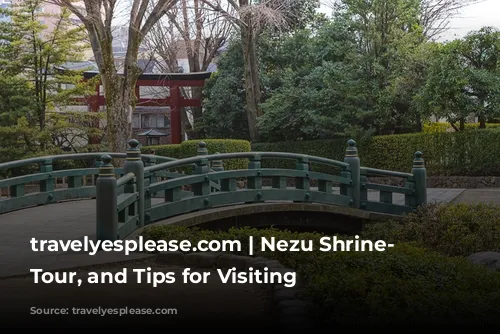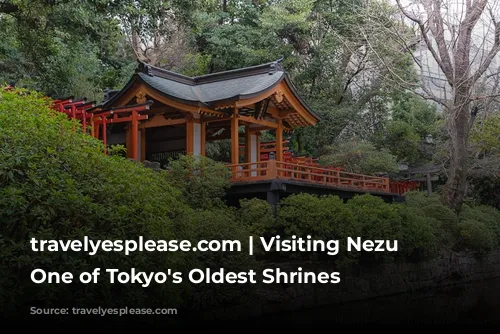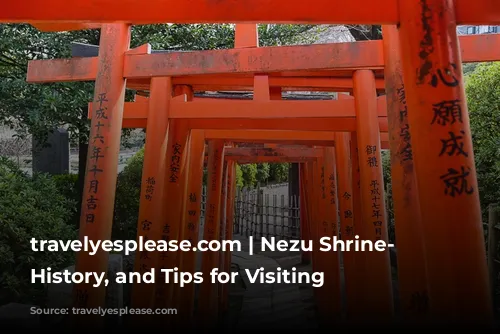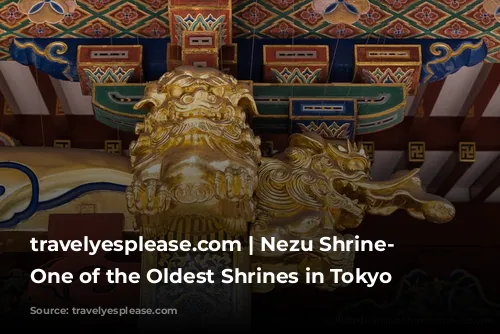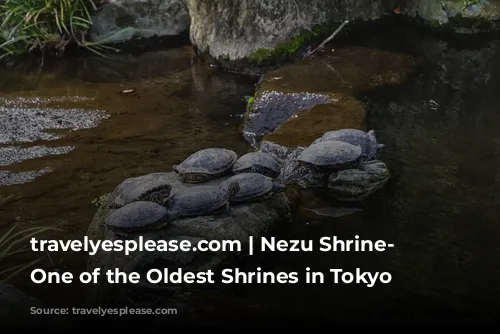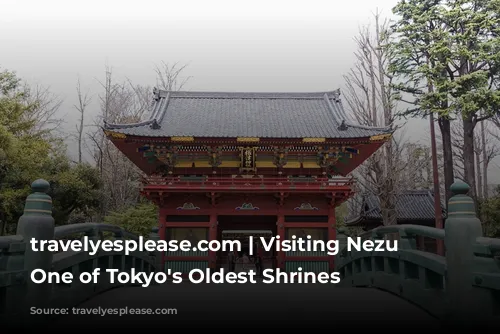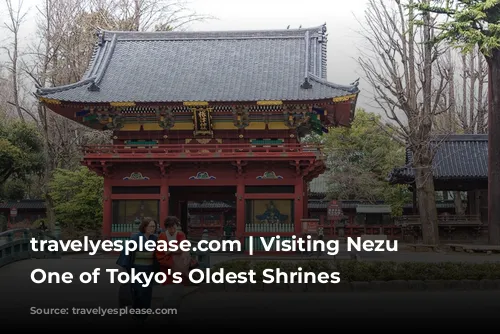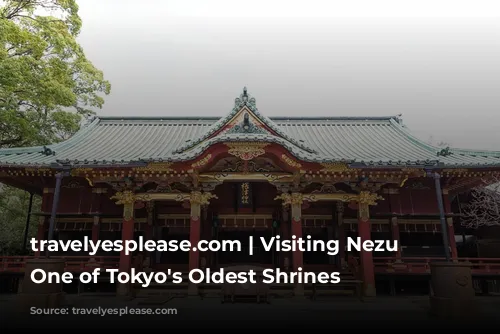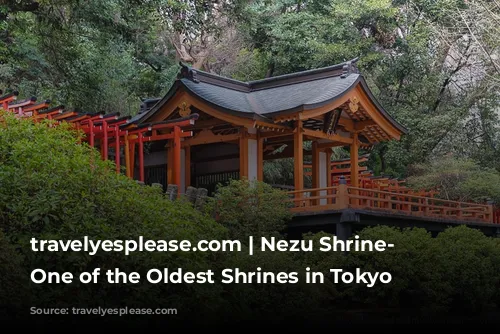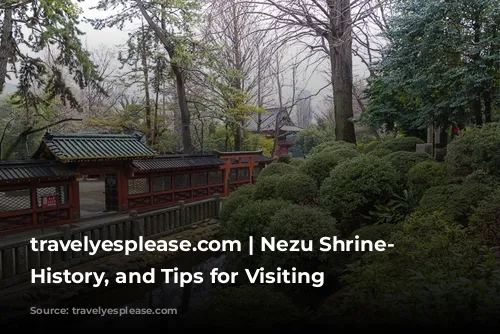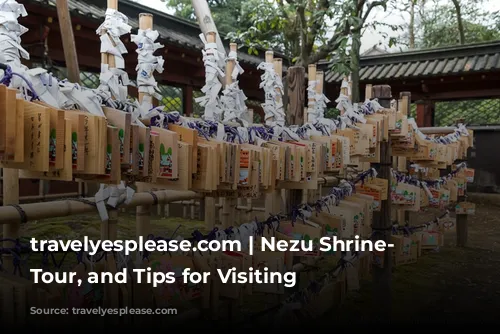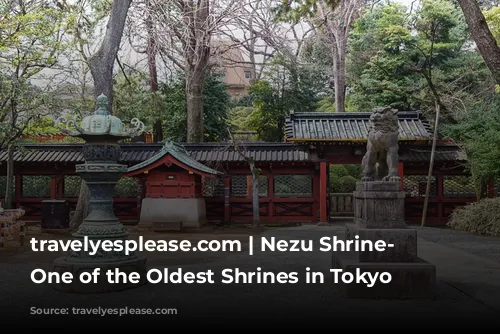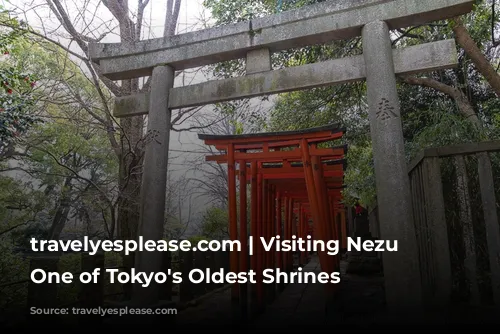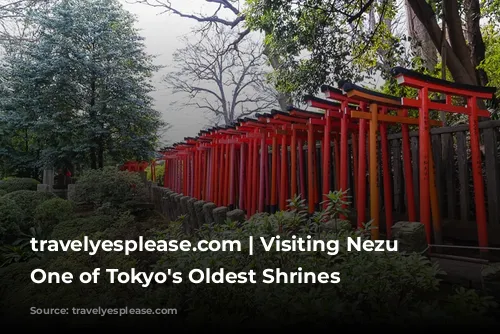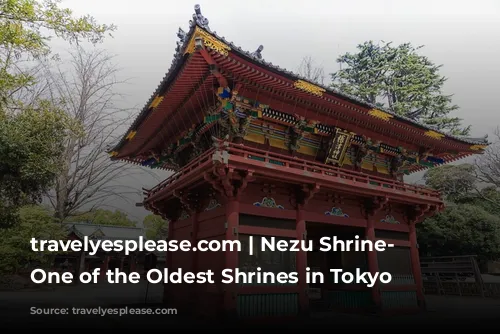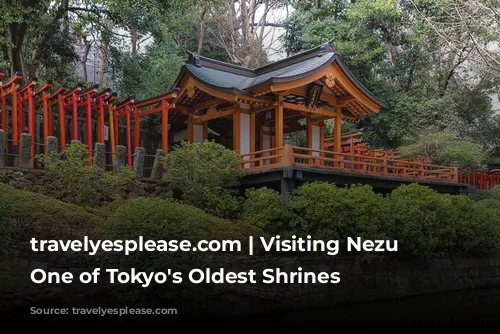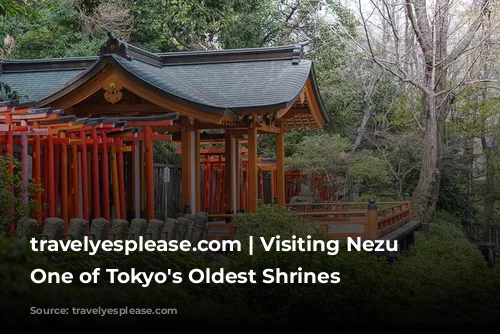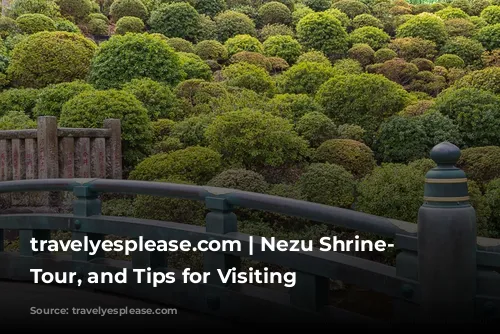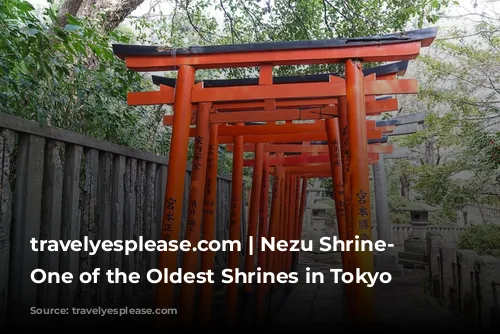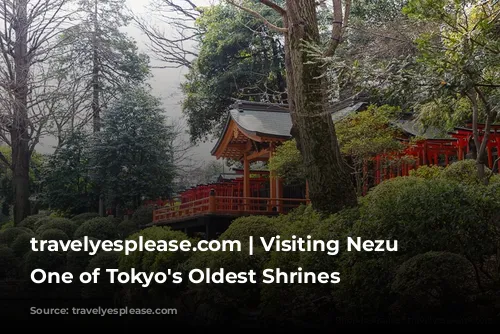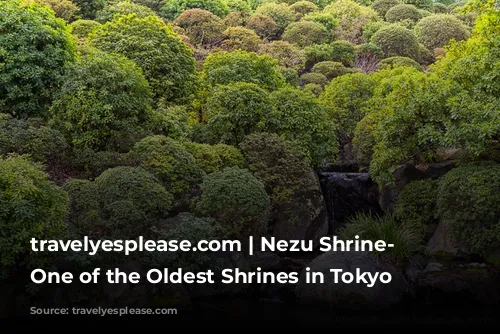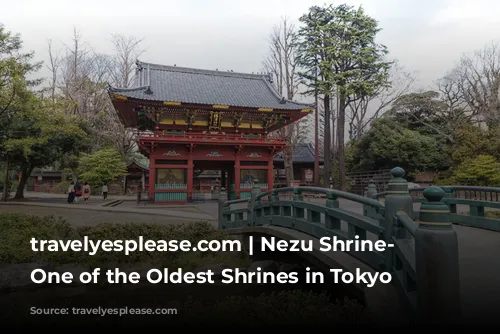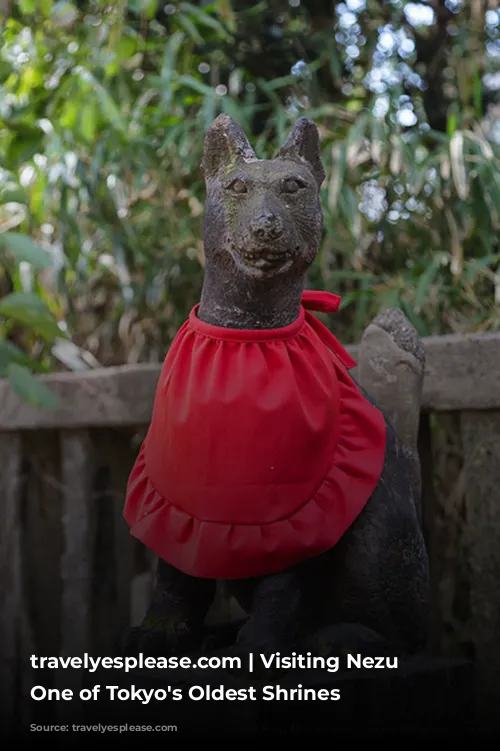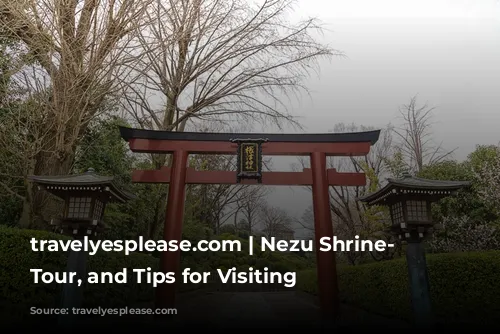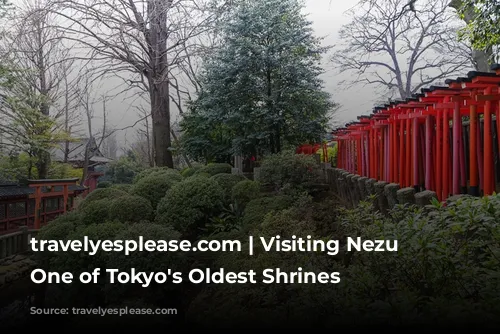Step away from the dazzling lights and frenetic pace of central Tokyo, and you’ll discover a hidden treasure: Nezu Shrine, one of the city’s oldest and most tranquil sanctuaries. Nestled amidst towering trees and vibrant azalea bushes, Nezu Shrine offers a peaceful escape from the urban jungle, inviting you to immerse yourself in the serene beauty of nature and the traditions of old Tokyo.
This is a place where time seems to slow down, allowing you to breathe deeply and reconnect with a simpler way of life.
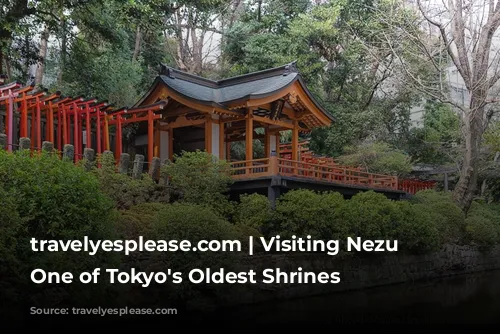
A Secret Gem Amidst the City
As I explored Nezu Shrine, I felt as though I had uncovered Tokyo’s best-kept secret, a hidden gem often overlooked in favor of its more famous counterparts like Meiji Shrine and Senso-ji Temple.
But perhaps this underestimation is what makes Nezu Shrine so special.
With its limited mention in guidebooks, I found myself surrounded by a peaceful ambiance, far from the crowds of tourists. I was able to witness locals engaging in heartfelt prayers, an experience that would have been impossible amidst the throngs of camera-wielding visitors.
However, I can imagine that this serene atmosphere might be transformed during the Azalea Festival in April when the hillside explodes into a riot of pink and purple hues, drawing visitors from far and wide.
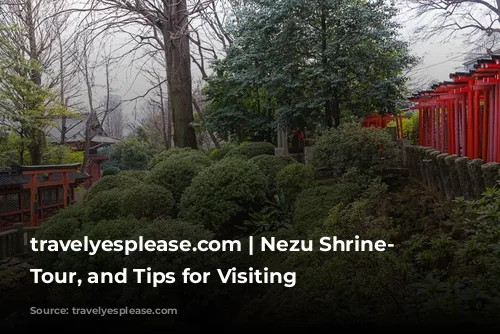
A Shrine Steeped in History
Nezu Shrine was established in its present location in 1705, but its roots delve deep into the past. Legend whispers that the shrine was founded in the 1st century by Yamato Takeru, a legendary prince, in the Sendagi area, just north of its current site.
Throughout the centuries, Nezu Shrine has played a significant role in Tokyo’s history. In 1706, the shrine was relocated to its present location by shogun Tokugawa Tsunayoshi, marking the occasion of his nephew, Tokugawa Ienobu, becoming his successor. New buildings were constructed in the Ishinoma-zukuri, or Gongen style, drawing inspiration from the magnificent Toshogu Shrine in Nikko.
The shrine’s prestige was further enhanced in the 19th century when Emperor Meiji, upon moving his residence from Kyoto to Tokyo, dispatched envoys to Nezu-jinja to seek divine favor from the gods.
Remarkably, Nezu Shrine escaped the devastating air raids of World War II, which transformed much of Tokyo’s landscape. This fortunate escape makes it one of the oldest shrines remaining in the city, with several structures now designated as Important Cultural Properties of Japan.
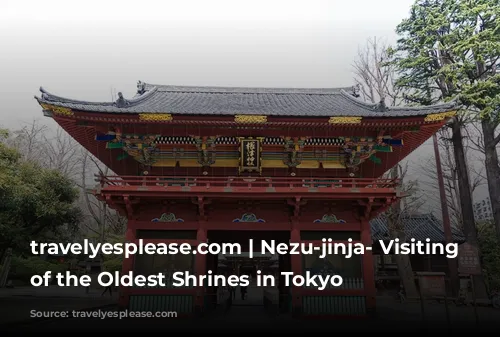
Exploring Nezu Shrine: A Journey of Discovery
My journey through Nezu Shrine began at the north entrance, leading me past smaller shrines on my way to the main buildings. Here’s a glimpse into the wonders that await:
Otome Inari Shrine and its Tunnel of Torii Gates
It was a photograph of Otome Inari Shrine that initially drew me to Nezu-jinja.
This small secondary shrine is beautifully situated above a koi pond, enveloped by lush greenery. The striking contrast between its vermilion viewing platform and the vibrant green foliage makes it the most photogenic spot within Nezu Shrine.
A path of torii gates, leading from Otome Inari Shrine, is a captivating feature of Nezu-jinja. Though smaller than the famed tunnel of torii at Fushimi Inari Shrine in Kyoto, it’s still a delight to wander beneath these symbolic gates towards the main shrine precinct.
The Azalea Garden: A Floral Oasis
Over 3,000 azalea bushes of various varieties adorn a hillside near the torii path, creating a breathtaking display of color and fragrance.
The azalea garden attracts a steady stream of visitors from early April to early May, when the flowers are in full bloom. But even without their vibrant hues, the azalea bushes enhance the beauty of Nezu Shrine, adding a touch of charm to its tranquil atmosphere.
Architectural Gems: From Romon to Karamon
The most impressive gate at Nezu Shrine is undoubtedly the two-storied romon.
Standing tall between a charming bridge and the shrine’s main hall, the gate features two statues of zuishin, kami warrior guardians, wielding bows and arrows. The plaque above its passageway proudly proclaims “Nezu-jinja”.
The karamon, or Chinese gate, marks the entrance to the shrine’s main place of worship. Adjoined to it is a 200-meter lattice-windowed wall, known as a Sukibei, surrounding the honden, the shrine’s most sacred building.
The Honden: A Sanctuary of Reverence
The honden is the main hall and most sacred building at Nezu Shrine. It encompasses the worship hall (haiden) and offertory hall (heiden).
The gold details and bright colors adorning the hall are truly captivating, especially the golden dragons perched atop the pillars, their presence both majestic and awe-inspiring.
Many locals stop to pay their respects here as they traverse the shrine grounds. Some even write wishes on wooden plaques, called ema, and leave them hanging inside the shrine for the kami (spirits or gods) to receive.
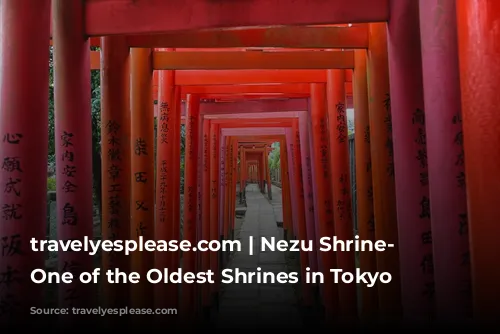
A Sanctuary for the Soul
Tokyo, with its overwhelming energy, can be overwhelming for an introvert like myself. But Nezu Shrine provided a welcome respite from the city’s clamor and frenetic pace.
The tranquility of the ponds, watching fish and turtles glide gracefully through the water, was incredibly relaxing. And being surrounded by the classic Japanese architecture in a city of towering skyscrapers was equally satisfying.
At Nezu-jinja, I felt as though I had experienced Tokyo authentically, gaining a glimpse into the city’s ancient soul and the daily rituals of its people.
If you’re seeking less crowded, more traditional destinations in Tokyo, then Nezu Shrine is a must-visit. It is a sanctuary for the soul, a place where you can escape the modern world and find peace in the heart of the city.
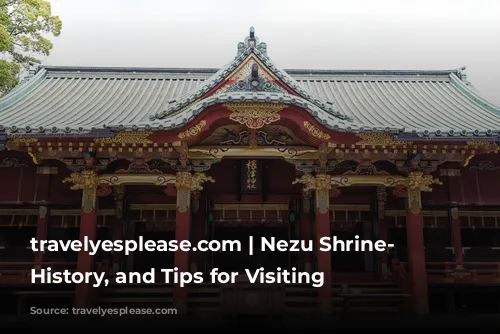
Nezu Shrine: A Photographic Journey
Here are a few more photographs of Nezu-jinja, one of Tokyo’s most captivating shrines.
If you’d like to explore Nezu Shrine with a guide, here’s a walking tour of Yanaka that includes a visit to this beautiful sanctuary.
For your convenience, here’s a list of HOTELS IN TOKYO. Please consider booking your Tokyo accommodations through the included link. It costs nothing extra and helps support this website. Thank you!
